Gestapelde stenen fineer panelen Voeg een tijdloze, natuurlijke look toe aan interieur- en buitenruimtes. Voordat u aan uw installatie begint, is het essentieel om het gebied nauwkeurig te meten om ervoor te zorgen dat u de juiste hoeveelheid stenen fineer koopt, overtollige kosten of tekorten vermijdt. Deze gids helpt u om gestapelde stenen fineer -panelen effectief te meten.
Wat is gestapeld stenen fineer Panelen?
-
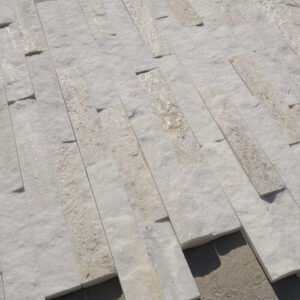 China nieuwe kleuren kwartsiet gestapelde stenen panelen
China nieuwe kleuren kwartsiet gestapelde stenen panelen -
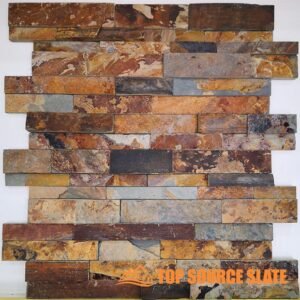 Ruw roestig leisteen gestapeld stenen grootboekpaneel 6 inch x 24 inch.
Ruw roestig leisteen gestapeld stenen grootboekpaneel 6 inch x 24 inch. -
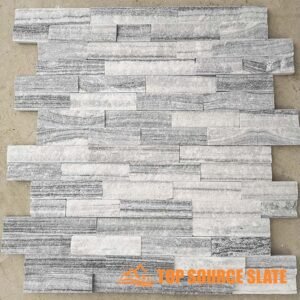 Ruw Alaska grijs gestapeld stenen grootboekpaneel van 6 inch x 24 inch.
Ruw Alaska grijs gestapeld stenen grootboekpaneel van 6 inch x 24 inch. -
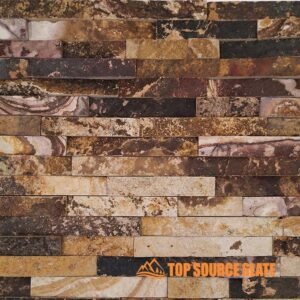 Ruw zandsteen gestapeld stenen grootboekpaneel van 6 inch x 24 inch.
Ruw zandsteen gestapeld stenen grootboekpaneel van 6 inch x 24 inch. -
 Ruw grootboekpaneel van natuurlijk zwart leisteen, 6 inch x 24 inch.
Ruw grootboekpaneel van natuurlijk zwart leisteen, 6 inch x 24 inch. -
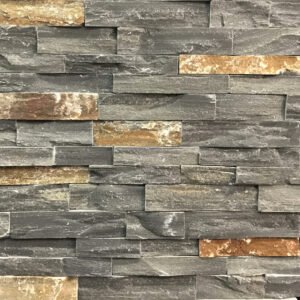 Sierra Blue Ledger-paneel 6 inch x 24 inch natuursteenkwartsiet
Sierra Blue Ledger-paneel 6 inch x 24 inch natuursteenkwartsiet -
 Californische gouden leisteen natuurlijke richelstenen panelen - 6 x 24
Californische gouden leisteen natuurlijke richelstenen panelen - 6 x 24 -
 Gouden oogst leisteen paneelgrootboek – 6 x 24
Gouden oogst leisteen paneelgrootboek – 6 x 24
-
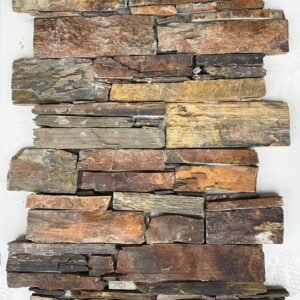 Groothandelsprijs natuurstenen buitenbekleding
Groothandelsprijs natuurstenen buitenbekleding -
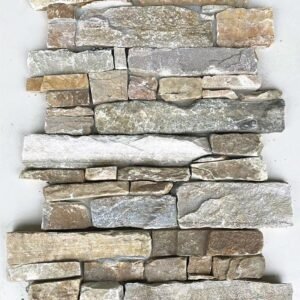 Oyster Quartz Z Stone-panelen 550 x 200
Oyster Quartz Z Stone-panelen 550 x 200 -
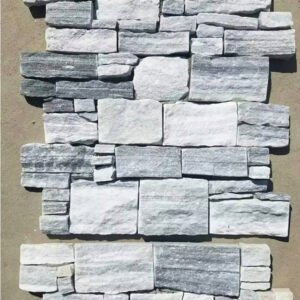 Bewolkt grijze Z-vorm kwarts natuurstenen bekledingspanelen
Bewolkt grijze Z-vorm kwarts natuurstenen bekledingspanelen -
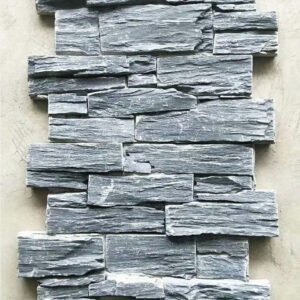 Zwarte leisteen Z-paneelbekleding
Zwarte leisteen Z-paneelbekleding -
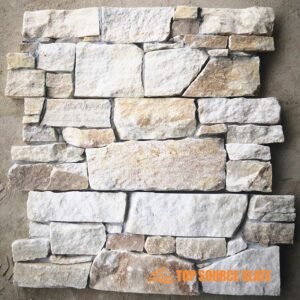 Natuurlijke witte kwartssteenbekleding
Natuurlijke witte kwartssteenbekleding -
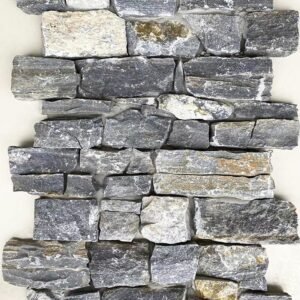 Blauwe diamantkwartssteenbekleding voor buitenmuurdecoratie
Blauwe diamantkwartssteenbekleding voor buitenmuurdecoratie -
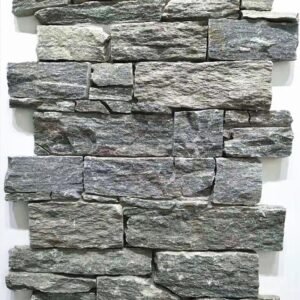 Groene kwarts natuurstenen bekledingspanelen
Groene kwarts natuurstenen bekledingspanelen -
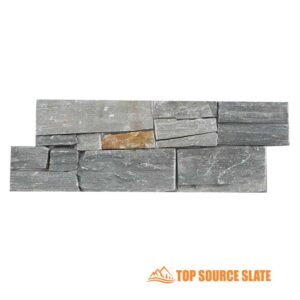 Chinese fabriek natuurlijke Z-steenpanelen
Chinese fabriek natuurlijke Z-steenpanelen
Gestapelde stenen fineer panelen Kom in verschillende maten en stijlen en biedt een reeks dekking per paneel. Sommige panelen bieden bijvoorbeeld 3,13 vierkante voet dekking. Inzicht in deze meting is cruciaal voor het berekenen van het aantal panelen dat u nodig hebt voor uw project. Controleer de richtlijnen van de fabrikant voor de exacte dimensies en dekking van het paneel.
Meet het platte oppervlak
Het nauwkeurig meten van de hoogte en lengte van de muur is essentieel om ervoor te zorgen dat u de juiste hoeveelheid stenen fineer berekent. Volg deze stappen:
Meet de wandlengte en hoogte
- Gebruik een meetlint: Begin met het meten van de hoogte van de muur van de basis naar de bovenkant, meestal van de vloer tot het plafond (voor binnenwanden) of van de grond tot de daklijn (voor buitenmuren). Rond de hoogte tot de dichtstbijzijnde inch of voet.
- Noteer de lengte: Meet vervolgens de horizontale afstand van het ene uiteinde van de muur tot het andere. Zorg ervoor dat u de volledige lengte registreert, inclusief eventuele hoeken waar gestapelde steen wordt geïnstalleerd.
- ONTWERKEN: Als het oppervlak schuine wanden of nissen omvat, breek het oppervlak in kleinere secties en meet ze ze allemaal afzonderlijk. Voeg deze metingen samen om de totale lengte en hoogte van de muur te krijgen.
- Meerdere muren: Herhaal dit proces voor projecten met meerdere wanden voor elk oppervlak dat wordt bedekt met gestapelde stenen fineer. Houd de afmetingen van elke muur afzonderlijk bij om verwarring tijdens de installatiefase te voorkomen
Bereken vierkante meters
Het berekenen van vierkante meters is van vitaal belang voor het bepalen van de totale dekking die nodig is voor uw project. Nadat u de hoogte en lengte hebt gemeten, volgt u deze stappen:
- Vermenigvuldig lengte door hoogte: Om de totale vierkante meters van elke muur te vinden, vermenigvuldig de hoogte met de lengte van de muur. Als een muur bijvoorbeeld 10 voet hoog en 15 voet lang is:
- 10 ft × 15 ft = 150 m².
- Aftrek van openingen: Als er ramen, deuren of andere grote openingen zijn, trek dan hun gebieden af van de totale vierkante meters. Om dit te doen, meet de hoogte en breedte van de opening en vermenigvuldig ze om het gebied te vinden. Als een venster bijvoorbeeld 3 voet bij 4 voet is:
- 3 ft × 4 ft = 12 m².
- Trek dit af van de totale vierkante meters van de muur:
- 150 m² ft. - 12 sq. Ft. = 138 m².
- 3 ft × 4 ft = 12 m².
- Herhaal voor meerdere muren: Als u meerdere wanden bedekt, herhaalt u dit proces voor elk en sommeert u de vierkante meters om het totale gebied te vinden.
- Voeg een buffer toe: Voeg altijd een extra 5-10% toe om rekening te houden met het snijden van fouten, verspilling en misrekeningen. Als uw totale vierkante meters bijvoorbeeld 138 m² is, met een buffer van 10%, bestel dan voldoende materiaal om te dekken:
- 138 m² ft. × 1.10 = 151,8 sq. Ft.
Door deze stappen te volgen, kunt u ervoor zorgen dat u een nauwkeurige schatting hebt van het stenen fineer dat nodig is voor uw project
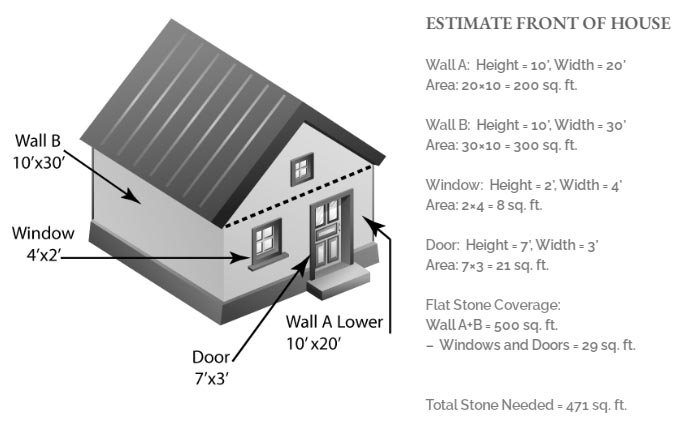
Openingen en obstakels
Voor ramen, deuren of andere onderbrekingen trekken hun gebied af van het totaal. Meet de breedte en hoogte van elk, vermenigvuldig en trek vervolgens af van de totale vierkante meters. Als een deur bijvoorbeeld 3 voet breed en 7 voet lang is:
3 ft × 7 ft = 21 sq. ft.Trek dit af van uw totale muuroppervlak.
Verspillingsbuffer
Voeg altijd 5-10% meer materiaal toe om rekening te houden met snijden, fouten en onregelmatige oppervlakken. Dit zorgt ervoor dat u extra stenen fineer hebt in het geval van fouten tijdens de installatie.
Het berekenen van de Gestapelde stenen fineer Panelen Uithoeken
Wanneer uw project binnen- of buitenhoeken omvat, moet u rekening houden met hoekstenen, die verschillen van platte panelen in termen van dekking. Hoekstenen worden gemeten in lineaire voeten, omdat ze de verticale rand van muren bedekken.
Om de lineaire beelden voor hoekpanelen te berekenen:
- Meet de hoogte van elke hoek en som de metingen op voor alle buitenhoeken om de totale lineaire voeten te krijgen. Als een hoek bijvoorbeeld 10 voet lang is:
Hoekhoogte = 10 ft
- Vermenigvuldig de totale lineaire beelden met de conversieratio van de fabrikant voor hoekpanelen. Meestal is 1 lineaire voet van hoekdekking gelijk aan 0,67 vierkante voet dekking van het platte paneel. Trek dit af van het totale vlakke oppervlak om dubbele counting te voorkomen.
Als u bijvoorbeeld 10 voet hoekdekking hebt:
10 lineaire voeten × 0,67 = 6,7 m².
Trek dit af van het totale platte oppervlak om een meer accurate materiaalschatting te krijgen
Legboeken en trims opnemen
Ledgers worden vaak gebruikt om lainscot -installaties op te sluiten of bieden een decoratieve afwerking langs de bovenrand van een stenen muur. Meet de lineaire voeten voor grootboeken op dezelfde manier waarop u platte muren meet:
- Meet de horizontale lengte waar grootboeken worden geïnstalleerd.
- Vermenigvuldig deze lengte met 12 om voeten om te zetten in inches.
- Deel door de lengte van één grootboekpaneel om te bepalen hoeveel u nodig hebt.
Als bijvoorbeeld de totale lineaire beelden voor grootboeken 65 voet zijn en één grootboekpaneel 42 inch bedekt:
(65 ft × 12 in) ÷ 42 in = 18.57 Ledgerpanelen
Rond altijd af om rekening te houden met mogelijke afval- of snijfouten.
Installatierichtlijnen voor gestapelde stenen tegels
Hoe gestapelde steen of richelsteen te installeren
Hoe een gestapelde stenen open haard te installeren
Hoe een stenen muur met droge stapels te bouwen
Account voor verspilling
Het is altijd raadzaam om 5-10% meer stenen fineerpanelen te kopen dan uw berekeningen suggereren. Dit overtollige verklaart eventuele breuk, snijfouten of onregelmatigheden tijdens de installatie. Als uw project bijvoorbeeld 100 panelen vereist, moet u een extra 5-10 panelen kopen om ervoor te zorgen dat u genoeg hebt.
Overweeg ramen, deuren en andere obstakels
Voor gebieden met ramen, deuren, elektrische dozen of andere obstakels kunt u in de verleiding komen om deze leegte af te trekken van uw totale meting. Het is echter het beste om deze ruimtes niet af te trekken van uw totale berekening. Je hebt vaak extra materiaal nodig om rekening te houden met het snijden rond deze obstakels, en het hebben van een paar extra panelen zorgt ervoor dat je de klus kunt afmaken zonder te kortlopen.
Laatste tips voor succes
- Start altijd uw installatie vanuit een hoek om een schone, gespreide look te garanderen.
- Als uw project hoekpanelen bevat, onthoud dan dat elk hoekpaneel gelijk is aan twee gestapelde platte panelen hoog.
- Trek bij het berekenen van grootboeken één rechte grootboek af voor elke twee hoekboekjes.
Conclusie
Nauwkeurig meten voor gestapelde stenen fineerpanelen is van cruciaal belang om een soepel installatieproces te waarborgen en kostbare vertragingen te voorkomen. Met zorgvuldige planning en precieze metingen kunt u ervoor zorgen dat u de juiste hoeveelheid materiaal voor uw project bestelt. Rond altijd af bij het berekenen van het aantal panelen en zorg voor extra materiaal om verspilling of fouten te bedekken.
Als u op zoek bent naarfabrikanten en leveranciers van gestapelde stenen, raden wij u aan onze producten te controleren.
We hebben meer dan 15 jaar exportervaring en bieden monsters aan voordat de bestelling wordt geplaatst.
Heeft u meer hulp nodig of wilt u iets op maat bespreken?Neem contact met ons op op elk moment.
En wij delen graag onze expertise om ook jou te helpen!


